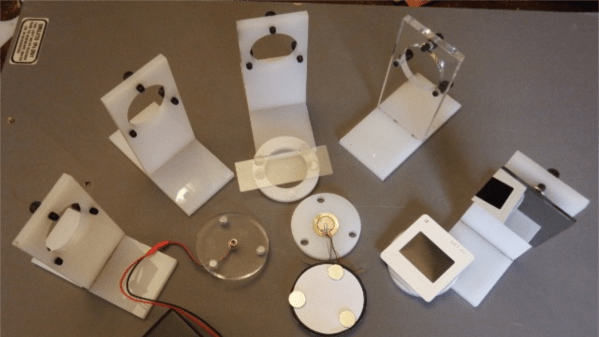Imagine a clock where the colors aren’t from LEDs but a physics phenomenon – polarization. That’s just what [Mosivers], a physicist and electronics enthusiast, has done with the Polarizer Clock. It’s not a perfect build, but the concept is intriguing: using polarized light and stress-induced birefringence to generate colors without resorting to RGB LEDs.
The clock uses white LEDs to edge-illuminate a polycarbonate plate. This light passes through two polarizers—one fixed, one rotating—creating constantly shifting colours. Sounds fancy, but the process involves more trial and error than you’d think. [Mosivers] initially wanted to use polarizer-cut numbers but found the contrast was too weak. He experimented with materials like Tesa tape and cellophane, choosing polycarbonate for its stress birefringence.
The final design relies on a mix of materials, including book wrapping foil and 3D printed parts, to make things work. It has its quirks, but it’s certainly clever. For instance, the light dims towards the center, and the second polarizer is delicate and finicky to attach.
This gadget is a splendid blend of art and science, and you can see it in the video below the break. If you’re inspired, you might want to look up polariscope projects, or other birefringence hacks on Hackaday.
Continue reading “Bending Light, Bending Time: A DIY Polarizer Clock”














